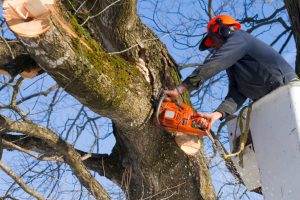 Mature trees have undergone various environmental changes and conditions. Along with the natural ageing process, these conditions eventually result in wood decay or deadwood. Despite being a natural occurrence that most trees experience, deadwood can be a sign of sickness, premature decay and other serious tree health issues.
Mature trees have undergone various environmental changes and conditions. Along with the natural ageing process, these conditions eventually result in wood decay or deadwood. Despite being a natural occurrence that most trees experience, deadwood can be a sign of sickness, premature decay and other serious tree health issues.
Causes of Deadwood
Many people think that deadwood removal is only for aesthetic purposes – large amounts of deadwood give off a visual imbalance – but its main purpose is to maintain good tree health. Deadwood is a sign of decay, and it can spread throughout the entire tree if not treated immediately.
As mentioned earlier, deadwood occurs as part of a tree’s natural ageing process. At a certain age, trees stop sending sap supply to its smaller branches and distribute larger portions to bigger branches that support the tree. Smaller branches eventually die this way resulting in deadwood.
Premature deadwood, on the other hand, is a result of various external factors such as fungi, bacteria, fire, pests, birds, harmful chemicals and human activities like vandalism and improper tree management. Unlike the natural process where deadwood merely dries out, this process hollows out the branches and rids it of essential nutrients. The hollow branch is eventually colonised by fungi.
When Deadwood Is Not Managed Properly
Leaving deadwood in trees can cause liability concerns. During inclement weather, deadwood can break away from the tree and get blown away by strong winds. In the UK, falling trees or branches cause 55 nonfatal injuries a year.
Meanwhile, improper management of deadwood can put the tree’s health at risk. Once deadwood falls from the tree, it exposes the tree’s heartwood leaving it susceptible to fungal, bacterial and insect infestation, which can eventually lead to trunk rot.
Evidence shows that deadwood of between 10 and 22 years of age is an ideal breeding ground for slime moulds, which can cause various tree diseases. Deadwood infested with fungi sporophores serves as a food and energy source for slime moulds. The older the woody decay is, the greater the abundance of slime mould.
There is also evidence pointing to deadwood being a favourable habitat and breeding ground for destructive molluscs. They prefer decaying tree stumps for resting and hibernating. Molluscs particularly take advantage of deadwood during the rainy season where they would climb on the trunk to protect themselves from getting wet.
Calling Professional Tree Surgeons
The deadwood found in your trees can be due to either natural phenomena or poor tree care and management. It is important to understand the origin of your tree’s deadwood, so your tree surgeon in Essex can give you appropriate advice regarding the best methods to solve your tree problem.
Deadwood must be removed by certified tree surgeons to lessen the risks of exposing the tree’s heartwood. Tree surgeons are trained to prune dead and decaying branches without putting the tree at risk of fungi and bacterial infestation.
Deadwood removal allows you to beautify your surroundings while keeping your premises safe for passersby and your neighbours. For all your tree care and management concerns, enlist the help of professional tree surgeons in your area.

